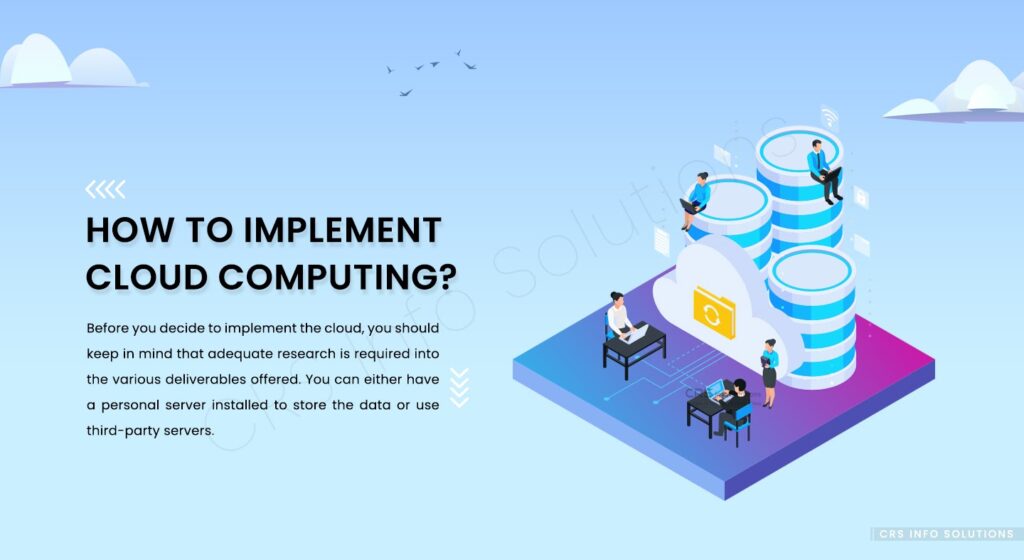
We all know about the latest technological advancements in the market. Besides, staying up with the times allows us to pass the tests of the market with flying colors. Recently, the new buzzword has been “Cloud Computing.”
It sounds sophisticated, expensive, and indispensable in the ever-evolving market (only one of those is correct, btw) and has caused a lot of confusion and apprehensiveness in the industry.
Let us take a look at how we connect many computers through the internet to access files and information from any place (which is, essentially, what cloud computing is all about).
What is it?
“It” is the general “on-demand” access to various digital resources, at any place or time, through the use of the internet. In layman’s terms, you can use any data or resource (that is stored anywhere on your company’s servers), through the internet, without having to move anywhere.
The data can be accessed by any device and does not take up space on your device. So any changes you might make will be stored on the cloud (servers), while you wouldn’t have to worry about space constraints.
All of this is done through the internet, and hence, is heavily reliant on wireless systems. This whole network works by keeping the goal (to allow maximum coverage of services while minimizing input costs) in mind and optimizing as and when required.
Why do we need it?
Cloud Computing is not a sudden fad. It has been here for a long time. However, the pandemic showed us the absolute need for cloud computing. You cannot always have physical access to your data. There are times when you might need computing power or resources but do not have the time to go in person or access them physically.
In such places, cloud computing comes in handy. Moreover, it helps you connect across a large set of teams with minimal physical activity. IT-based companies, especially, love cloud computing, as their employees can work on products through their devices and the internet.
This has boosted productivity in many industries and has made the process of deployment of services smoother than ever.
How to implement Cloud Computing?

Before you decide to implement the cloud, you should keep in mind that adequate research is required into the various deliverables offered. You can either have a personal server installed to store the data or use third-party servers. There are many pros and cons to both types, so be sure to keep a list of ideas that you’d want to be implemented.
Secondly, you should never compromise on cloud services. Sure, paying more for a digital gimmick you don’t understand might sound like a risky investment, but it’s better to pay more and get predictive results than leaving it all up to fare. To this end, you should try to get the services of companies that are considered to be the gold standard in this niche, like Google and Amazon Web Services.
What will I be getting out of this?
The gains of implementing cloud technology can be categorized into three zones:
- Lowering of IT Costs
Cloud allows you to reduce the burden on existing IT infrastructure by storing the data in one place and allowing multiple users to access and use that data. This means that you can save programs and applications on a central server, and all the employees can access it and utilize it without paying an additional fee,
- Improves time to value ratio
With the help of the cloud, the employees can work directly on the projects without having to get any other department’s response. This cuts down on time, increases communication, and reduces goof ups.
It is also a godsend feature to have, especially for developers and data analysts, and scientists, who need to collaborate and work with various departments all the time.
- Cost-effective Scalability
Suppose, with the help of cloud computing, your business prospers and recess new heights. Now you want to expand your horizon. Would Cloud help in that in any way?
The answer is a resounding yes. Instead of bulk purchasing applications or software that you may not use for a long time, you can purchase just enough for current work and buy more as you go. In addition, it has very high flexibility and is not too hard on the wallet (or a treasury, in the case of a big company).
Conclusion
Cloud Computing is the future. That much is a fact. The only question that remains to be asked is which side of the future you want to be? Cloud is simple in its infrastructure but very capable and effective with its features. It is a no-nonsense gimmick that allows various departments to work in close collaboration.
It is also a good investment for the future. You can stay up-to-date with technology as new things come while working remotely, which is one of the biggest pros of the cloud. For instance, the pandemic shut many businesses down, but many companies have come back up through the cloud.
And finally, it makes your company seem professional and effective. Many brands do the same things, but only the ones that do it effectively are thought of as the “gold standard.” So, instead of a lousy implementation at lower costs, try getting the best cloud implementation done without worrying about the financial aspect. It will be repaid by the system over the course of many months and start generating profits soon.




Leave a Reply
You must be logged in to post a comment.